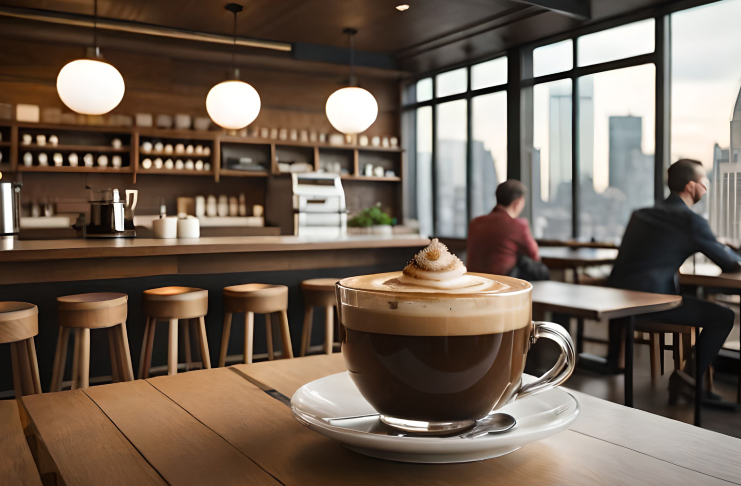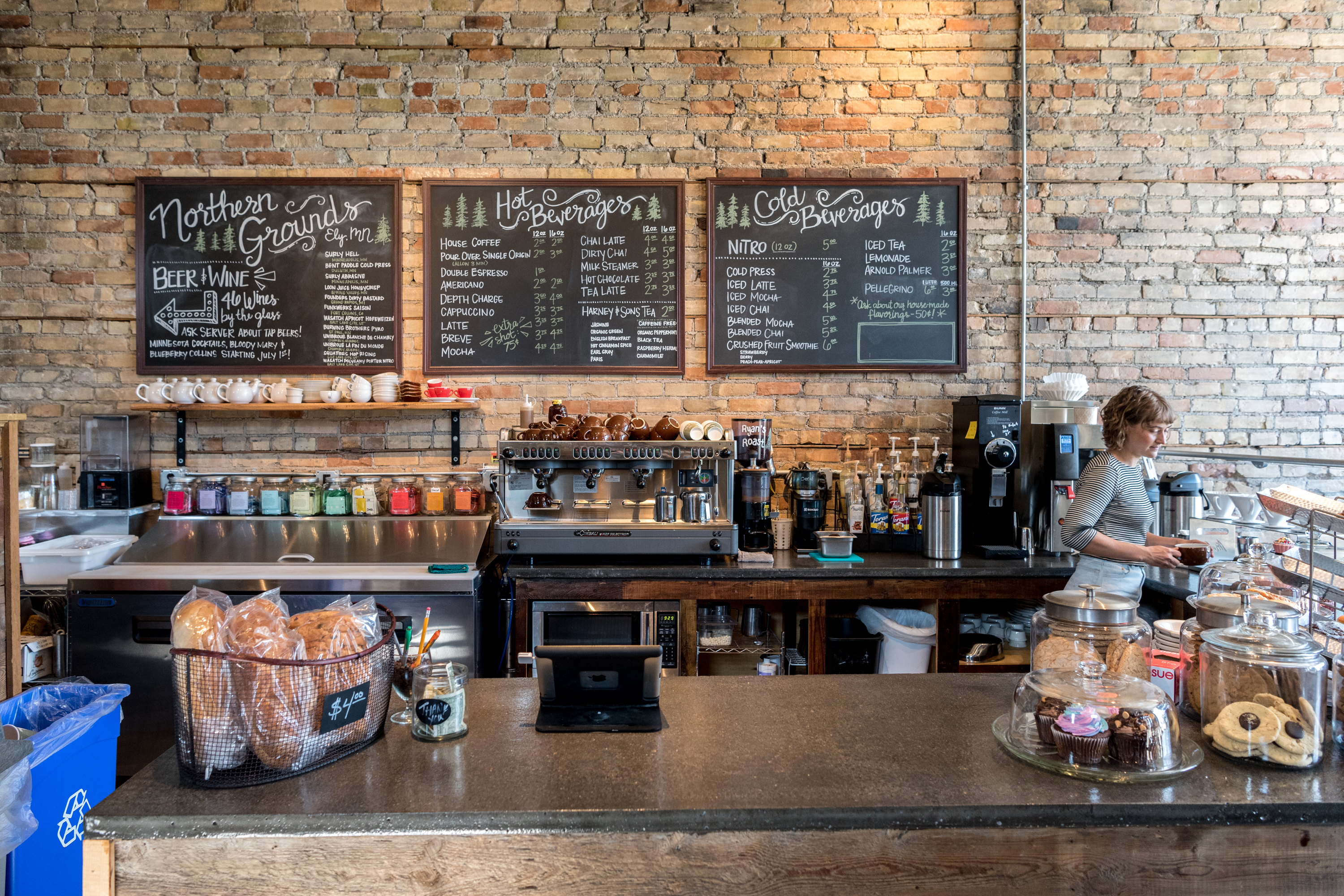Yemen Grill-- Authentic Yemeni Food for an One-of-a-kind Dining Experience
Yemen Grill-- Authentic Yemeni Food for an One-of-a-kind Dining Experience
Blog Article
Exactly How to Select the Right Kind Of Coffee for Your Taste Preferences
Choosing the optimal coffee to complement your taste choices needs an informed method to both bean selections and brewing strategies. Discovering various brewing approaches can enhance these tastes, even more individualizing the coffee experience.
Understanding Coffee Beans
Recognizing coffee beans is essential for any type of coffee lover looking for to boost their developing experience. The foundation of a great mug of coffee hinges on the kind of beans picked, each offering unique flavors and characteristics. Coffee beans generally fall under two main groups: Arabica and Robusta. Brooklyn Coffee Shops. Arabica beans are recognized for their smooth, fragrant qualities and complex flavors, usually chosen for specialty coffees. They flourish at higher altitudes and are a lot more susceptible to insects, causing a higher price point.
On the other hand, Robusta beans consist of a greater caffeine material and are characterized by a stronger, more bitter preference. They are hardier and expand at reduced altitudes, making them cheaper and frequently utilized in espresso blends for added crema.

Exploring Developing Methods
Exploring different developing approaches is crucial for opening the complete capacity of chosen coffee beans. Each method supplies a distinct strategy to extracting structures, flavors, and aromas, inevitably influencing the general coffee experience. Typical brewing techniques consist of drip, French press, espresso, and pour-over, each with its unique qualities and demands.
Drip brewing is popular for its benefit and consistency, using a paper or metal filter to separate coffee grounds from the brewed beverage. French press, on the other hand, enables for full immersion of coffee grounds, resulting in an abundant, durable taste account. Coffee is a focused type of coffee produced forcibly warm water through finely-ground coffee, creating a bold shot that acts as the structure for different beverages like cappucinos and cappuccinos.
Pour-over brewing grants the customer better control over the removal process, enabling exact modifications in water temperature and circulation price. This technique usually highlights the intricate tastes of specialized coffee beans. Ultimately, the option of developing method should align with personal choices and desired flavor end results, setting the stage for an enjoyable coffee experience customized to specific tastes.
Identifying Taste Profiles
Determining flavor accounts is necessary for appreciating the subtleties of various coffee ranges. Coffee's taste is influenced by several elements, including the beginning of the beans, the processing approaches, and the roast level. Each of these elements adds to a complicated range of tastes, which can vary from fruity and floral to earthy and nutty.
To start determining taste accounts, take into consideration the coffee's beginning. Beans from areas such as Ethiopia commonly exhibit intense level of acidity and fruity notes, while those from Colombia might provide a smoother, caramel-like sweet taste. The processing technique also plays a crucial function; for example, washed coffees often tend to have cleaner, brighter flavors contrasted to natural refined beans, which can exhibit much more obvious fruitiness.
Light roasts commonly preserve even more of the bean's initial qualities, while dark roasts might present deeper, smokier flavors. Creating a palate for these tastes enhances your coffee experience, permitting you to appreciate the unique top qualities of each selection and inevitably see here guiding your selection toward the coffee that aligns with your taste choices.
Matching Coffee to Preferences
When it concerns matching coffee to private preferences, recognizing personal preference is extremely important, as it enables a more tailored coffee experience. Each coffee enthusiast has distinctive flavor inclinations that can guide their options, making it necessary to understand these preferences prior to choosing a brew.
For those inclined towards sweeter notes, coffee kinds with all-natural sweetness, such as Ethiopian Yirgacheffe or Brazilian Santos, may be specifically enticing. Conversely, if a choice leans towards strong and durable tastes, alternatives like Colombian Supremo or Sumatran Mandheling might offer the desired strength.
Moreover, the acidity degree plays an important duty in the coffee choice process. Coffee aficionados that appreciate a bright, tasty taste could prefer light roast coffees, whereas those who like a smoother, lower-acid experience may go with dark roasts. Additionally, the selection of brewing approach can significantly influence taste understanding; for example, coffee has a tendency to concentrate tastes, while pour-over techniques permit a much more nuanced account.
Inevitably, matching coffee to preferences entails a careful consideration of flavor accounts, acidity, and developing techniques, guaranteeing a satisfying and gratifying coffee experience tailored to specific tastes.
Experimenting With Various Varieties
To truly appreciate the varied globe of coffee, trying out different ranges is important. Each coffee bean has unique flavor profiles influenced by variables such as origin, processing techniques, and roast degrees. By checking out numerous types, you can uncover a spectrum of preferences that might line up very closely with your preferences.
Start your trip by attempting beans from various areas, such as Ethiopian Yirgacheffe with its intense level of acidity and floral notes, or Colombian Supremo, known for its well balanced flavor and moderate sweet taste (Cafe Bistro). Furthermore, think about try out different handling approaches, such as cleaned versus all-natural, which can considerably alter the last taste
Roast levels also play a vital duty; light roasts typically protect the bean's inherent tastes, while dark roasts offer bolder, more robust profiles. When trying out, make note on each selection's flavor attributes and your overall impression.
Taking part in samplings, whether at neighborhood cafés or with curated membership solutions, can better boost your understanding. Inevitably, accepting a range of coffee types enables you to fine-tune your taste buds and find your personal faves within the large coffee landscape.
Final Thought
In conclusion, picking the ideal coffee kind demands an understanding of numerous beans, developing techniques, and taste accounts. By comprehensively exploring the differences between Arabica and Robusta ranges, alongside varied brewing techniques, coffee fanatics can find combinations that straighten with individual taste choices. Trial and error with different varieties better improves the coffee experience, inevitably bring about a more tailored and gratifying pleasure of this precious beverage. Such a strategy promotes a much deeper recognition for the complexities of coffee.
Understanding coffee beans is important for any coffee enthusiast looking for to boost their developing experience. Recognizing these subtleties enables coffee enthusiasts to pick beans that align with their taste choices, leading the way for a more satisfying her response and personalized check this coffee experience.

Creating a palate for these flavors boosts your coffee experience, allowing you to value the distinct high qualities of each selection and ultimately directing your option towards the coffee that lines up with your preference preferences.
Coffee connoisseurs who appreciate an intense, zesty taste might favor light roast coffees, whereas those who like a smoother, lower-acid experience might decide for dark roasts.
Report this page